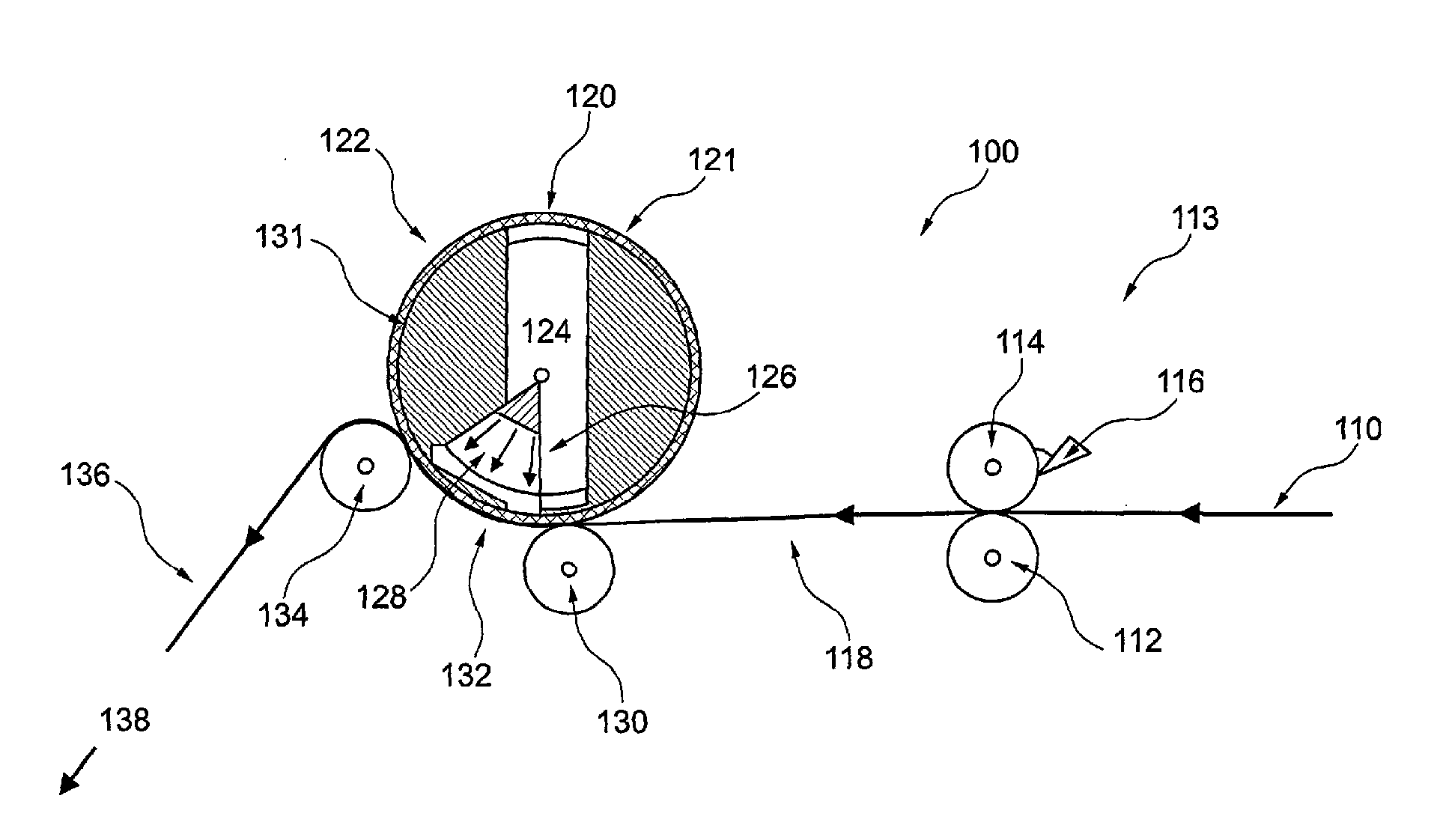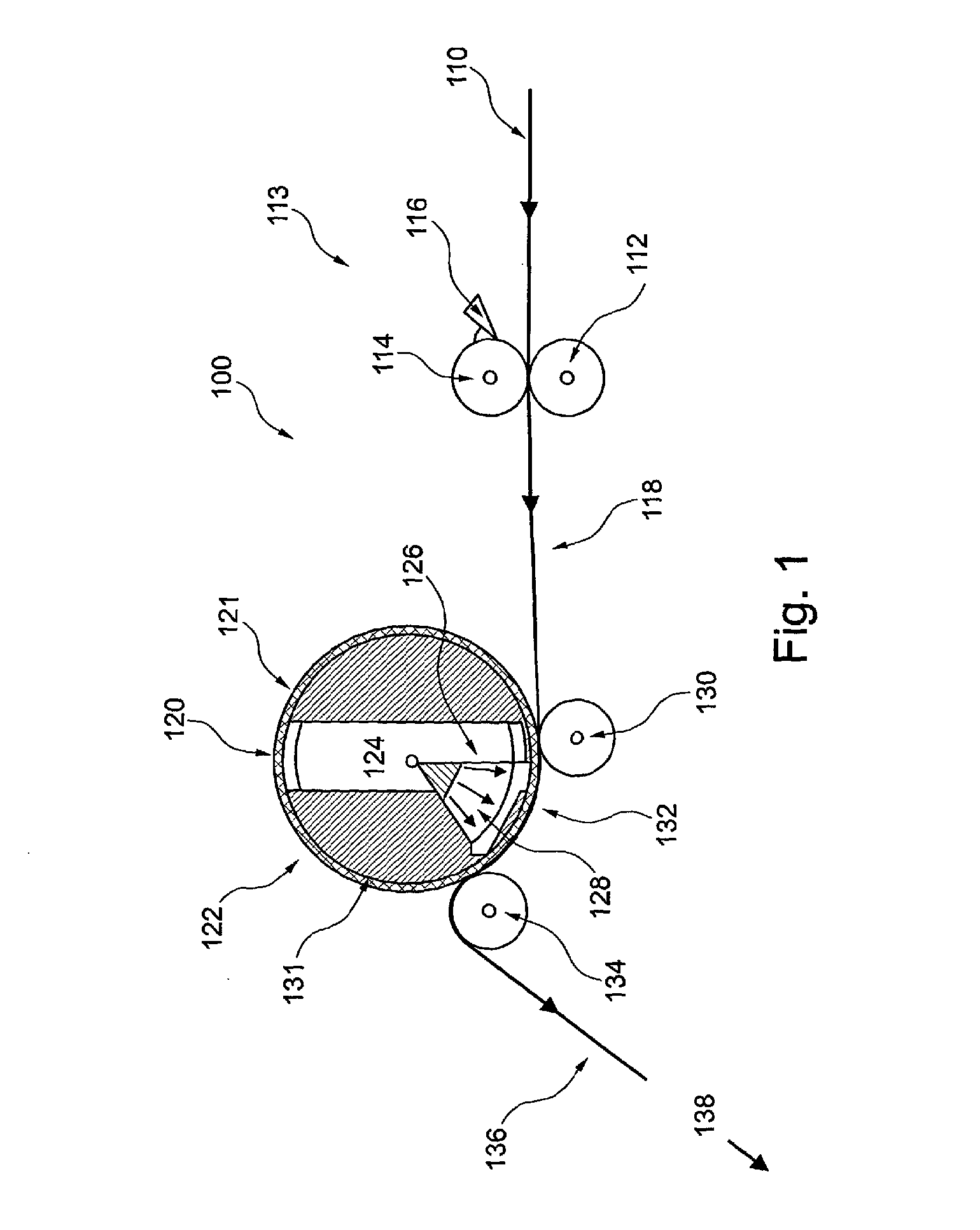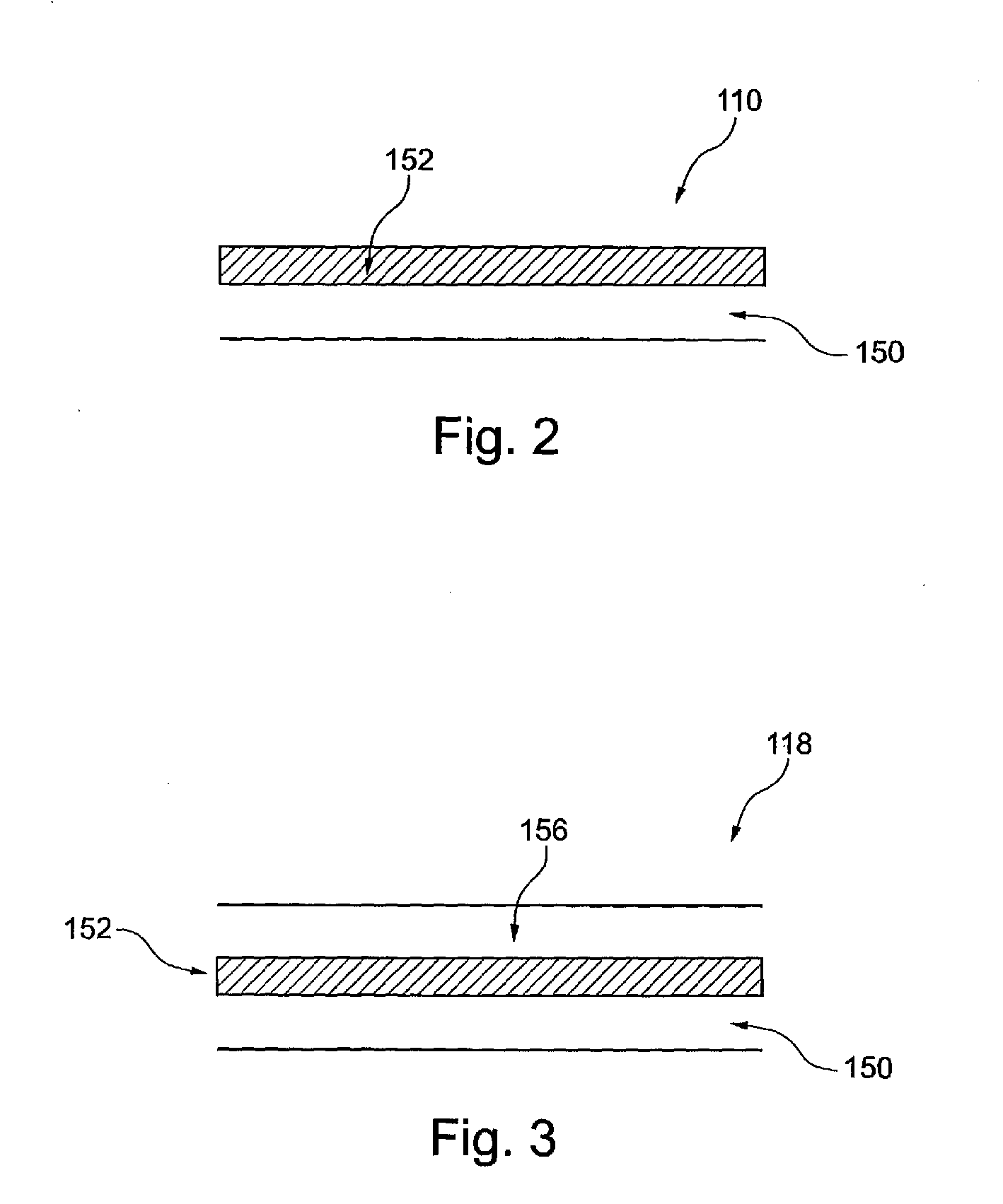Photoimaging
- Summary
- Abstract
- Description
- Claims
- Application Information
AI Technical Summary
Benefits of technology
Problems solved by technology
Method used
Image
Examples
Example
[0199]Generally speaking, the present invention resides in the provision of an improved photoimaging process wherein a rotatable phototool is used. In the present invention photoimaging process there is also no pre-drying prior to the actual imaging process—this is in contrast to prior art processes. The improved photoimaging process is based on the principle that liquid photopolymer (i.e. printable ink which can be imaged and cured) is not pre-dried prior to imaging and a rotatable phototool is used which allows reel to reel continuous process to be used. The parts of the photopolymer which are imaged are hardened and can then be used to form electrical circuitry. The photopolymer which is unexposed remains in liquid form can then be washed off.
[0200]In the prior art there are many circuits made by reel to reel production methods. Flexible circuits lend themselves to this method. Increasingly, high outputs of printed circuitry are required for the ‘printed electronics’ market. Reel...
PUM
| Property | Measurement | Unit |
|---|---|---|
| Length | aaaaa | aaaaa |
| Length | aaaaa | aaaaa |
| Length | aaaaa | aaaaa |
Abstract
Description
Claims
Application Information
 Login to View More
Login to View More - R&D
- Intellectual Property
- Life Sciences
- Materials
- Tech Scout
- Unparalleled Data Quality
- Higher Quality Content
- 60% Fewer Hallucinations
Browse by: Latest US Patents, China's latest patents, Technical Efficacy Thesaurus, Application Domain, Technology Topic, Popular Technical Reports.
© 2025 PatSnap. All rights reserved.Legal|Privacy policy|Modern Slavery Act Transparency Statement|Sitemap|About US| Contact US: help@patsnap.com



